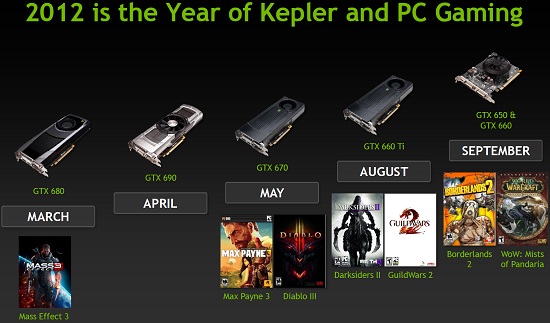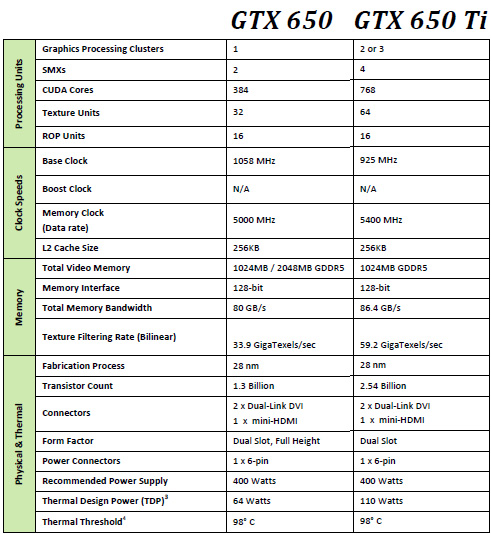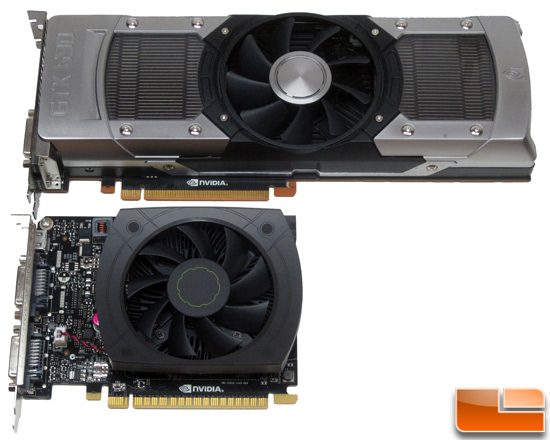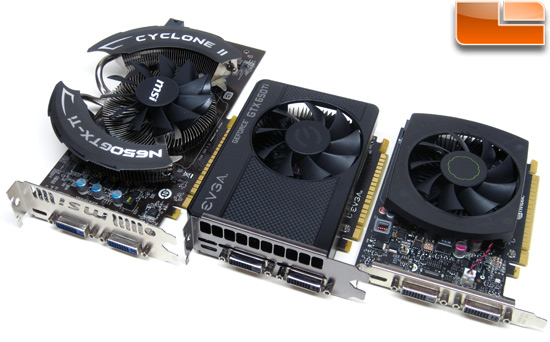NVIDIA GeForce GTX 650 Ti Video Card Review w/ MSI and EVGA
NVIDIA GeForce GTX 650 Ti Arrives At $149
This morning NVIDIA released the new Geforce GTX 650 Ti video card. The Geforce GTX 650 Ti is theentry point to the GeForce GTX family of high-performance graphics cards. Like the GeForce GTX 650, the GeForce GTX 650 Ti was designed for gaming at the most common gaming resolution of 1920×1080. The NVIDIA GeForce GTX 650 Ti is 40% faster than the standard GeForce GTX 650 in game titles, so don’t mix the two cards up! The GeForce GTX 650 Ti was built to deliver best-in-class performance for 1080p gamers that want to spend around $150. Yes, the NVIDIA suggested retail price on the GeForce GTX 650 Ti is $149.99, which is $40 more than the GeForce GTX 650 at $109.99. So, you get a around a 40% price increase for an extra forty bucks. Sounds good so far!

NVIDIA has been very busy in 2012 and have released 11 video cards so far this year! The GeForce GTX 650 Ti makes the seventh GeForce GTX this year and according to what we have been told by NVIDIA, this will complete the Kepler GTX lineup!
NVIDIA GeForce Desktop Graphics Card Lineup:
- GeForce GTX 690
- GeForce GTX 680
- GeForce GTX 670
- GeForce GTX 660 Ti
- GeForce GTX 660
- GeForce GTX 650 Ti
- GeForce GTX 650
- GeForce GT 640
- GeForce GT 630
- GeForce GT 620
- GeForce GT 610
- GeForce 210
The NVIDIA GeForce GTX 650 and GeForce GTX 650 Ti might sound like they are similar and would use the same Kepler GPU core, but they do not. The NVIDIA GeForce GTX 650 uses the GK107 GPU with 384 CUDA Cores running at 1058MHz and a TDP of just 64 Watts. The NVIDIA GeForce GTX 650 Ti uses the GK106 GPU with 768 CUDA cores running at 925MHz and a TDP of 110 Watts.

Once you compare the specifications of the GeForce GTX 650 Ti to the GTX 650 you can see how different these two cards are. As you can see from the table above neither card features a boost clock, so understanding the clock speeds is fairly simple. The NVIDIA GeForce GTX 650 Ti reference card features a core clock of 925 MHz and a memory clock of 1350 MHz (5400 MHz effective). The 1024MB of GDDR5 memory runs on a 128-bit memory bus and at reference speeds has a memory bandwidth of 86.4 GB/s. The GeForce GTX 650 Ti uses the same core as the GeForce GTX 660, so it has 2.54 billion transistors and a TDP of 110 Watts.

The GeForce GTX 650 Ti reference board is pictured above. This card measures in at just 5.65-inches in length and the PCB ends where the PCI Express x16 slot retention mechanism ends. This is about as short as you can get and this card was quickly referred to as ‘stubby’ or ‘the stub’ around the LR office. One 6-pin PCIe power connector is required and NVIDIA suggests at least a 400W power supply for proper operation.
It should be noted that NVIDIA removed GPU boost and SLI support on the GeForce GTX 650 Ti. NVIDIA said that both were removed due to cost considerations. Display outputs include two dual-link DVIs, and one mini-HDMI. The GeForce GTX 650 Ti GPU supports up to four displays, so if you need to run four displays be on the look out for custom cards from NVIDIA board partners.

We didn’t think the previous picture did the NVIDIA GeForce GTX 650 Ti justice when it comes to how small it really is, so we took a picture next to the NVIDIA GeForce GTX 690. The NVIDIA GeForce GTX 690 graphics card is NVIDIA’s flagship GPU and is is 11-inches long. As you can see the GeForce GTX 650 Ti is tiny in comparison and would make for an awesome discrete desktop graphics card for a Mini-ITX Desktop build or any small form factor (SFF) PC.

In addition to the NVIDIA reference design our friends over at EVGA and MSI sent over some retail production cards. These retail GeForce GTX 650 TI cards feature some customizations and are factory overclocked, so let’s take a look at them before we jump into the performance numbers!

Comments are closed.